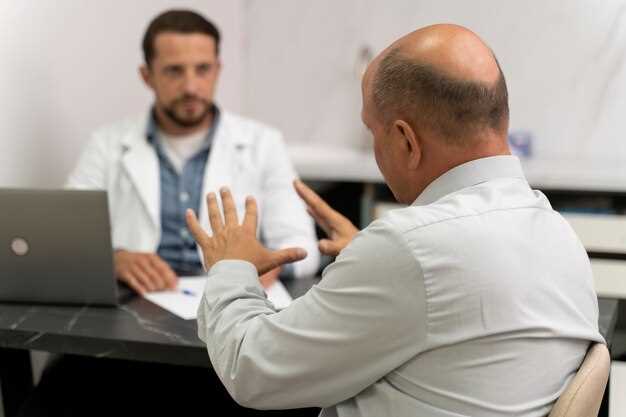Make a plan now to discuss colorectal symptoms with a gastroenterologist; early, clear action begins a carefully navigated path. Weeks of uncertainty can be emotional, but a combination of diet changes and routine tests makes the journey less frightening. Publicly sharing this experience with families and women can offer greater support, especially when kimberly is involved and the guidance taught helps navigation through fear.
Regular colorectal assessments, including colonoscopies, are central to early detection. When risk is told by a trusted doctor, a combination of diet changes and screening paves a path that families can follow. This approach has shown to ease the burden for women who often shoulder caregiving duties away from home and helps transform fear into amazing, proactive action, reducing the nightmare of uncertainty.
Emotional resilience grows when conversations are open and burdens are shared. The nightmare recedes as early discussions begin with the gastroenterologist, with kimberly’s steady support making the routine feel manageable. For families, difficult feelings are transformed into action, and women always gain the confidence to engage in screening and preventive care.
The path begins with preparation: gather medical history, prepare questions for your first visit, and set a schedule for colonoscopies. A thoughtful strategy led by a gastroenterologist yields greater confidence for patients and their loved ones. For kimberly and other caregivers, sharing updates publicly can educate others and reduce stigma around colorectal illness.
Practical breakdown of diagnosis, emotional response, prognosis, and next steps
Ask for a concise written plan outlining the immediate steps over the next 4–6 weeks, including which tests are scheduled, decision points, and who to contact for urgent questions. This ensures the needed actions are documented and the team can continue coordinated care.
Emotional response often appears as a profound mix of disbelief, fear, and relief when the medical finding is explained; shes may feel raising anxiety while much information must be processed; joining a support group can be cathartic and help balance the process.
The outlook for this condition depends on overall health, disease extent, and how well the body tolerates initial therapy; clinicians typically present ranges rather than fixed outcomes; maintaining a healthy lifestyle, staying active as tolerated, and prioritizing sleep can support better results; milestones are tracked across months, including july, as part of ongoing assessments.
Next steps include a review of the explained findings with the care team, scheduling imaging and labs in the coming weeks, and seeking a second opinion if options are unclear; if symptoms appear or worsen, contact the team promptly; early involvement of palliative care can improve comfort and decision-making.
Dietary and activity plans focus on increasing protein and calories to protect body mass; eat small, frequent meals rich in lean protein, vegetables, and whole grains; aim to limit ultra-processed foods and added sugars, while staying hydrated; consider a long horizon plan for energy, and adjust as tolerated; talking to a dietitian helps tailor these recommendations to personal tastes and cultural preferences, which may be beautiful in daily routines.
Building a culture of care means involving loved ones, trusted clinicians, and community resources; having questions prepared for each visit helps ensure the right information is collected; articles and patient stories can offer perspectives and normalize feelings; join groups and support networks to share strategies for coping, sleep, and stress management.
For those who have been screened recently, review the results with your team and outline what comes next; these steps involve scheduling follow-up imaging, blood work, and functional assessments to monitor effect and well-being; the care plan should specify what to watch for at home and when to seek urgent care.
The core aim is to know what to expect, maintain a full, healthy daily rhythm, and make decisions aligned with personal values; these decisions will be supported by a robust care team, practical recommendations, and ongoing communication; theyll be opportunities to adjust strategies as new information is processed and the body responds.
Timeline of the moment he learned and immediate reactions
Verify facts with your provider immediately and log the sequence for accuracy; источник confirms that those details matter and will make sure everyone is aligned.
During a routine screened test, the provider delivered results that required urgent discussion; the moment begins with a jolt in the body as the reality hits.
That moment, the actor’s calm gives way to heavy tension; the room fills with quiet, and the heart pounds as the news sinks in; those nearby process the gravity together, pretty clearly.
Within minutes, close allies are informed, including the father; the talk centers on next steps and the support needed to endure the coming weeks, thats where trust matters most.
Dialing numbers to set up follow-up visits begins; priorities shift toward protection of the body and mental health; the trend toward proactive care grows in importance, getting families ready to act, whether these steps fit right away or require adjustment.
Publicly, the actor chose to share cautiously, and источник said that the year and the initial response appeared in several outlets; those details help others feel less alone and show that transparency can coexist with privacy.
The five-year plan focuses on follow-ups, therapy, and family dynamics; the united circle includes a father, spouse, and close friends to maintain stability; according to careful discussion, this experience taught resilience, the feeling of gratitude for support strengthens the marriage bond and anchors daily life.
In closing, the approach emphasizes getting accurate information, keeping lines open for talk, and relying on trusted providers to navigate what comes next, with guidance from kindelan to keep the process humane and practical.
What Stage 3 cancer generally means for prognosis and how factors affect outcomes
Recommendation: Prioritize a combination therapy plan with close monitoring and regular follow-up; actively address modifiable risks, especially smoking cessation and reducing a sedentary lifestyle, to improve outcomes.
Prognosis for locoregional illness depends on biology, nodal involvement, margin status after surgery, and response to treatment. Among tumor types, five-year survival ranges roughly from 50% to 80% when treatment is tailored and completed, reflecting biology and adherence. Detection of illness-related changes before distant spread improves odds, and those with favorable biology often show longer disease-free years.
Key factors include age and overall health. Younger patients with good performance status tend to tolerate therapy better, though some histologies are more aggressive. Among modifiable risks, smoking cessation and maintaining an active lifestyle reduce decreased risk of complications and help outcomes; a sedentary pattern is linked to worse recovery.
Screening and timely detection help identify illness-related changes earlier; colonoscopy is typically advised for colorectal risk, and regular checks can lower the likelihood of needing intensive treatment later. Among those with early detection, outcomes improve compared with those diagnosed after symptoms appear.
Therapy planning should be patient-centered, with a sense of purpose and close collaboration. A combination of procedures, radiation, and systemic therapy is common, with head-on attention to side effects and nutrition; if issues arise, theyyll adjust the plan and maintain close follow-up.
Family and caregivers provide unconditional support; their involvement helps reduce stress and improve adherence. A heartfelt, stream of clear information supports those affected in knowing what to expect and what to do next; vuotta of experience and thank to clinicians build trust.
Katie serves as a tangible example: although the path can be tough, regular monitoring and a regular colonoscopy schedule, together with a combination approach and an unwavering care plan, help those close to her navigate the process. The path emphasizes unconditional support, heartfelt communication, and a stream of information to empower families and patients soon.
Questions to ask doctors to clarify prognosis and treatment paths
Request a writing prognosis summary at every visit to preserve a clear stream of details. Demand a front-line plan that aligns with your goals, especially for the weeks and month ahead; this motivation helps you and your family manage difficult choices and stay focused on a good outcome for kids and lives.
To support decision-making, ask for definitions and milestones, and request a trusted contact like Robin on the care team to help compile the details and keep communication heartfelt. If you want to share progress, think about how you would present updates on instagram and who gets to see them. You’ve been preparing for years, and the clarity you gain now improves your sense of control.
When you prepare, specify which data points will influence the decision, and request clear definitions for terms such as improvement, stability, and risk; ask for the time horizon your provider uses, and what would trigger a change in course. This helps anyone reading the notes have a concrete sense of expectations.
Discuss how daily routines may be affected: what to expect for energy levels, appetite, and body changes, and what strategies can help maintain eating patterns and activity. Being proactive about these details can make the path feel less difficult and more manageable for someone leading a busy life with kids and others depending on them.
Ask about support options and resources beyond medical care, including rehabilitation, nutrition guidance, and mental health support, and whether a referral could be helpful within the next few weeks. This can make the plan more cohesive and tangible, and often improves overall quality of life over time.
| Question | Why it matters | What to expect |
|---|---|---|
| What is the current extent and distribution of the illness? | Sets the scope for risk assessment, planning, and timelines. | Imaging and tests will be described; a plan for next steps and follow-up will be provided. |
| What are the goals of the approach: cure, control, or symptom relief? | Clarifies expectations and aligns choices with personal values. | Provider outlines scenarios and likely outcomes for each option. |
| What options exist, and what are the expected timeframes and potential side effects? | Helps anticipate impact on daily life and plan supports at home and work. | Plan may include medications, procedures, or lifestyle changes; side effects management discussed. |
| What tests and metrics will guide decisions, and how often will we reassess? | Establishes objective criteria for changing course. | Re-evaluation schedule and triggers for modification are explained. |
| What are the risks given current health, and how can we optimize lifestyle (activity, eating, sleep)? | Addresses modifiable factors and quality of life with practical steps. | Actionable steps and referrals (dietitian, physical therapist) to support progress. |
| Are there clinical trials or other alternatives that fit the profile? | Offers access to new options when standard paths are limited. | Eligibility criteria, potential benefits, burdens, and consent requirements discussed. |
| Who is on the care team, and how should we share updates with family or the public (e.g., Instagram)? | Clarifies roles, coordination, and communication preferences. | Contact details, channels, and update cadence provided; privacy settings explained. |
Common treatment options for Stage 3 cancer and how they might apply
Begin with a multimodal plan at centers that involves a gastroenterologist when digestive tract involvement exists; this stream of care starts with molecular profiling to guide targeted choices, increases precision, and shortens time to therapy. Involvement of a wife and other family members supports adherence and morale, making the treatment journey united and more resilient, especially during pretty challenging weeks over the next several years.
-
Surgical approach – If feasible, achieve maximal safe removal of visible disease with a surgical oncology team; postoperative pathology guides adjuvant therapy. When margins are clear, the plan often reduces the burden on subsequent modalities; if extensive spread or high-risk anatomy is present, prioritize alternative local control paired with systemic treatment. Centers such as Anderson and Tonioli facilities frequently coordinate between specialties to optimize outcomes.
-
Radiation-based local control – Use high-precision methods (IMRT, SBRT) to limit exposure to nearby organs; standard courses range from about 4 to 6 weeks, with shorter regimens possible for selected sites. Consider concurrent radiosensitizing agents when organ function allows; monitor for fatigue, skin changes, and mild GI or urinary symptoms, adjusting the plan in real time.
-
Systemic therapy: chemotherapy – Platinum- or taxane-based regimens are common, delivered in cycles every 2 to 3 weeks for several cycles; dose modifications depend on renal/hepatic function and blood counts. Antiemetics, growth-factor support, and nutrition counseling improve tolerance; energy conservation and activity pacing help maintain performance status across treatment years.
-
Systemic therapy: immunotherapy – Checkpoint inhibitors or combination regimens may yield durable responses in select histologies; baseline biomarker testing (e.g., mismatch repair status) informs likelihood of benefit. Watch for immune-related adverse events; early recognition via education video resources and timely steroid management improves prognosis.
-
Systemic therapy: targeted therapy – When actionable mutations or amplifications are identified, employ agents designed to interfere with specific molecular drivers; integrate with chemo or immunotherapy if indicated by tumor biology. Require ongoing molecular testing and periodic reassessment of options as resistance mechanisms emerge.
-
Endocrine/hormone-directed therapy – For hormone receptor–driven patterns, implement inhibitors or modulators with a long-term course; monitor bone density, lipid profile, and metabolic effects; provide supplementation and lifestyle guidance to maintain function over years.
-
Clinical trials and next-generation approaches – Explore trials at participating centers to access novel combinations or agents; eligibility criteria vary by site and disease features. Talk with trial coordinators at centers like Anderson and Tonioli to identify suitable options; trials can increase access to promising therapies and contribute to the overall prognosis.
-
Supportive care and lifestyle optimization – Early integration of nutrition, physical therapy, and symptom management improves tolerance for active treatment. Acknowledge family dynamics and marriage as assets; provide education on energy conservation, sleep hygiene, and stress reduction to maintain quality of life. Use education videos to reinforce self-care and treatment adherence.
Prognosis improves when therapy is tailored to biology, started promptly, and adjusted based on response; a proactive, collaborative approach at united centers amplifies the chance of meaningful control and preserves function over years. Recalled experiences emphasize that early molecular testing, clear communication, and ongoing follow-up across centers predict better outcomes, particularly when patients and partners share a common understanding of goals and expectations.
What to expect in the weeks following diagnosis: monitoring, side effects, and support
Recommendation: Arrange a regular check-in with your provider within the first week to set a monitoring plan, a symptom log, and a stream of support options that you can continue across the weeks ahead.
Monitoring specifics include regular lab work (CBC, CMP) every 1-2 weeks during the first month, then every 4-6 weeks if stable. Imaging is pursued only when symptoms or the provider signals, and vitals and weight are tracked at each contact. For those with a five-year horizon, care is framed as lifetime management rather than a single event. Specifics should be documented so someone can review trends during each follow-up.
Common early side effects can include fatigue, nausea, appetite changes, and constipation. Manage constipation with hydration, fiber, and, per provider, stool softeners or osmotic agents; keep a simple diary recording bowel movements, fluid intake, and activity to guide adjustments. Report persistent symptoms promptly; patterns may manifest differently in those with other health conditions. The mystery of exact timelines may persist, but data support steady progress in many cases.
Support channels include regular bedside visits or video check-ins, a nurse navigator, and joining a peer group. Those who organize care can share recommendations and humor to ease the mood. Katie’s story showed that writing about the experience and staying connected with others improves morale; theres never a single route, but a network can make a profound difference.
In the weeks ahead, expect energy fluctuations, changes in appetite, mood shifts, and variable sleep. Keep a log of those changes and discuss them with your provider at each contact. A phased approach to activity helps those returning to work or school; the same principles apply across those cases, allowing you to pace routines and avoid overexertion. Regular checks and a clear month-by-month plan support back-and-forth with the care team.
Specifics to follow: maintain a consistent routine, sip fluids often, and choose fiber-rich foods. Having a clear plan for weekly checks and a monthly review helps you stay informed and engaged. Writing notes or recording short videos can support back-and-forth with the care team and family; visuals from video bedside contacts can show progress and areas needing attention. The culture of care benefits when someone leans on a team, and the percentage of people who engage those resources often improves after the first month. Celebrities and public figures sometimes share experiences, reinforcing that you are not alone in this period.

 James Van Der Beek Recalls Going Into ‘Shock’ After Learning About His Stage 3 Cancer Diagnosis">
James Van Der Beek Recalls Going Into ‘Shock’ After Learning About His Stage 3 Cancer Diagnosis">

